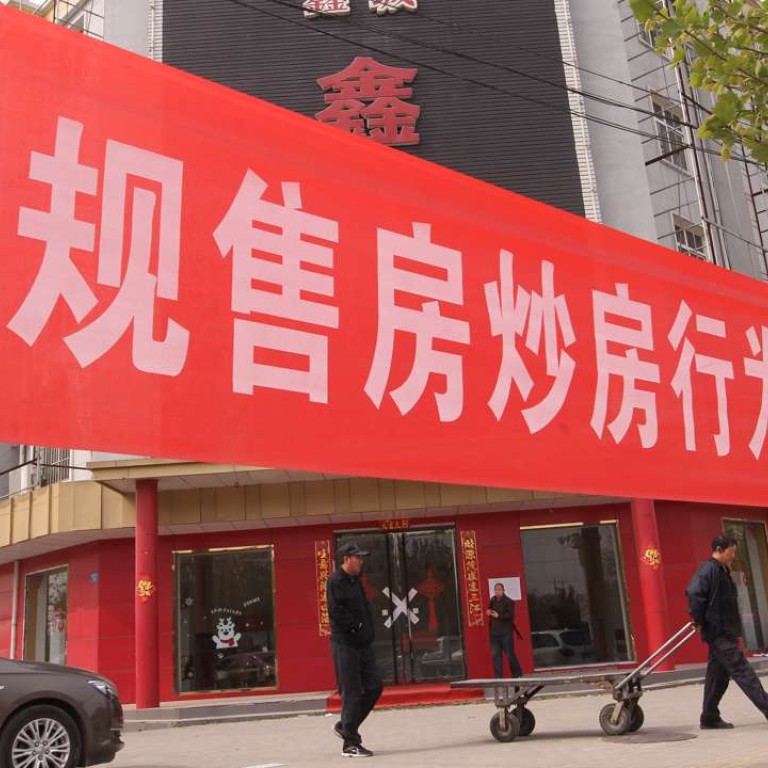
Can China’s President Xi Jinping realise his ‘perfect’ city dream?
Xi wants to emulate Shenzhen and Pudong in Shanghai, but times have changed and transforming an economic backwater will be difficult
China’s decision to develop a new economic zone in a Hebei backwater is a great thing for the nation and “a big strategy for a thousand years”, according to President Xi Jinping.
It was a bold declaration for a Chinese leader who has not yet finished his first five-year term and who leads a Communist Party that has existed for less than 100 years.
Xi wants to build a “perfect” place in Xiongan, according to the vision presented by the official Xinhua news agency. The Xiongan New Area would be environmentally friendly and a good place to live, it said. Its economy would be supported by innovation, and it would have top-notch public services.
The president said Xiongan would at least have the same meaning for the country as Shenzhen in the 1980s and Shanghai Pudong in the 1990s. Xinhua said the area was picked as the site for the city of future because it was “a piece of white paper” and “the most beautiful picture can be painted upon it”.
“Xi is a strongman who wants to undermine vested interest groups which have established roots in Beijing for generations,” said Mei Xinyu, a researcher affiliated with China’s Ministry of Commerce. “Starting from a new place could reduce their influence, while Xiongan would become Xi’s legacy.”
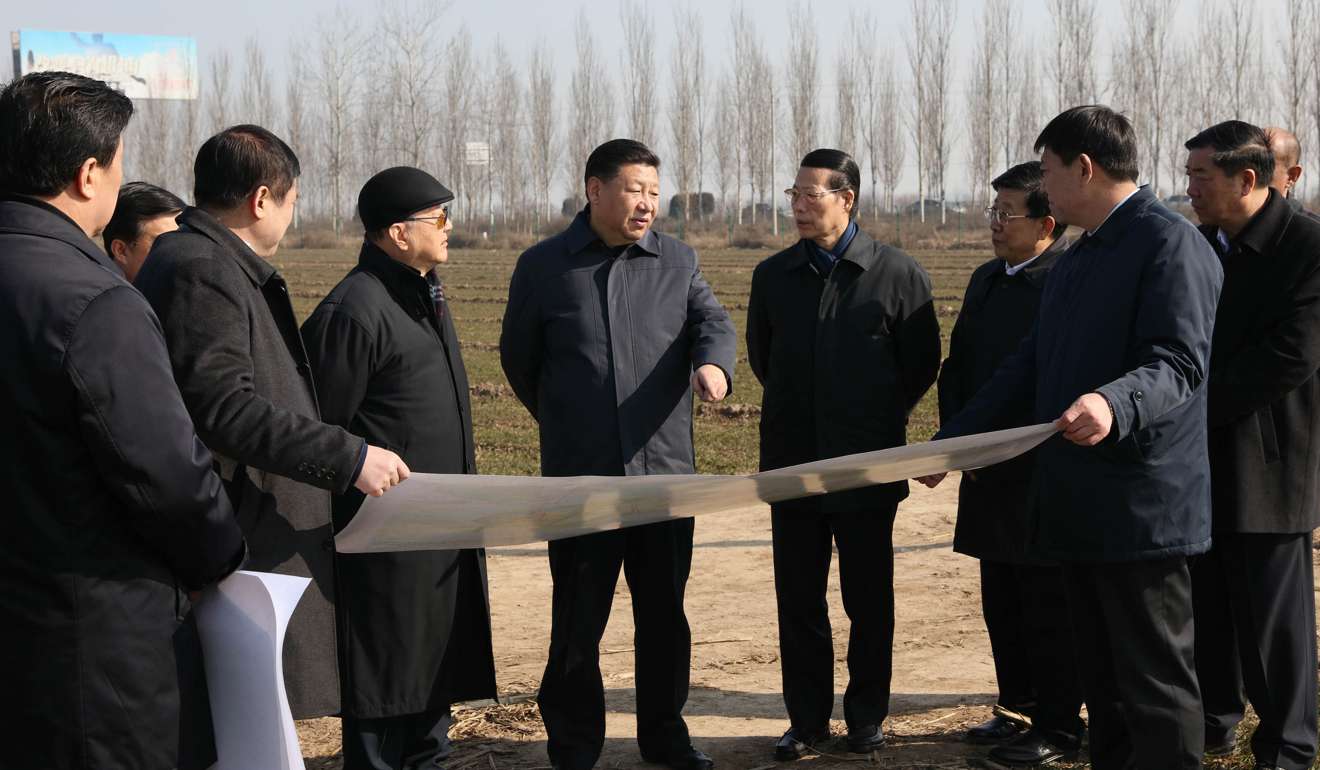
According to a long Xinhua article detailing the decision-making process behind the Xiongan plan, Xi thought Beijing had succumbed to the “the illness of a big metropolis”, namely stretched public services, jammed roads and air pollution. The right cure, the article cited Xi as saying, was to “downsize” Beijing by kicking out merchants, migrant workers and factories and moving schools, hospitals and institutions somewhere else.
Xiongan – encompassing the counties of Xiong, Rongcheng and Anxin – is a key piece of that puzzle.
But a recent visit, after the local authorities suppressed initial property speculation hype, found it looked nothing like a modern metropolis. Both sides of Xiongzhou Road, the main street in Xiong county, are lined with donkey burger and noodle stalls, foot massage salons and shops selling agricultural plastic film, which says a lot about the local economy.
The only sign even remotely related to innovation was an advertisement at a bus stop featuring an unauthorised image of late Apple founder Steve Jobs inviting companies to place ads.
The three counties, in the centre of Hebei province, were uncharted territory on the economic map until April 1, when China announced plans to create the Xiongan New Area as a metropolis from scratch, shocking even local residents. One told the South China Morning Post during an earlier visit that he thought it was an April Fool’s joke.
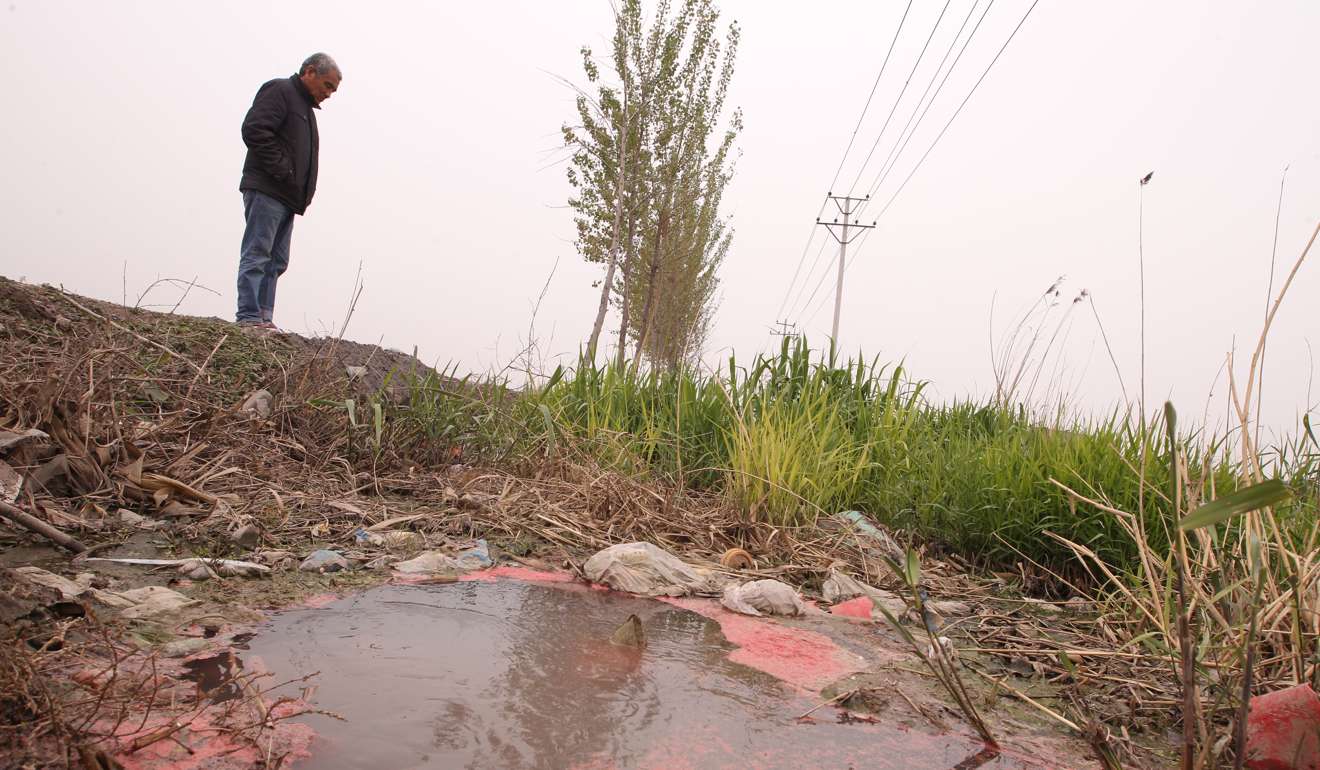
Nevertheless, dozens of China’s state-owned enterprises, including the company making the country’s aircraft carrier, have pledged to move part of their operations into the zone. Tianjin party secretary Li Hongzhong, who has been pledging absolute loyalty to Xi, has made a lot of eye-catching public comments about Xiongan, including that Tianjin will “give whatever” Xiongan wants.
Zhang Lifan, a Beijing-based historian and commentator, said a powerful state was not necessarily good for regional development.
“China always boasts that it can swiftly mobilise resources with administrative orders,” Zhang said. “But if the project is not proven to be sound by scientific research ... the quick China speed could be disastrous.”
Despite Xi’s personal commitment to the new economic zone and the determination to repeat the success of Shenzhen, a fishing village that became China’s bustling innovation centre, and Pudong, a riverside wetland that turned into its financial Mecca, it’s an open question whether China still has the social and economic wherewithal to produce another, similar success story.
In fact, a lot of new zones have failed in recent years despite initially high expectations.
A decade ago, China’s central government named Caofeidian, in northeastern Hebei, as a “state-level” new zone, promising to make it China’s answer to Rotterdam and to move a huge steel plant there from Beijing. A recent visit found it a graveyard of construction sites, unfinished buildings and a vast, unoccupied stretch of reclaimed seafront land after a decade of wasteful investment. Caofeidian, covering nearly 2,000 sq km, is just one of 19 “state-level” zones in China, 10 of which were created in 2014 and 2015.
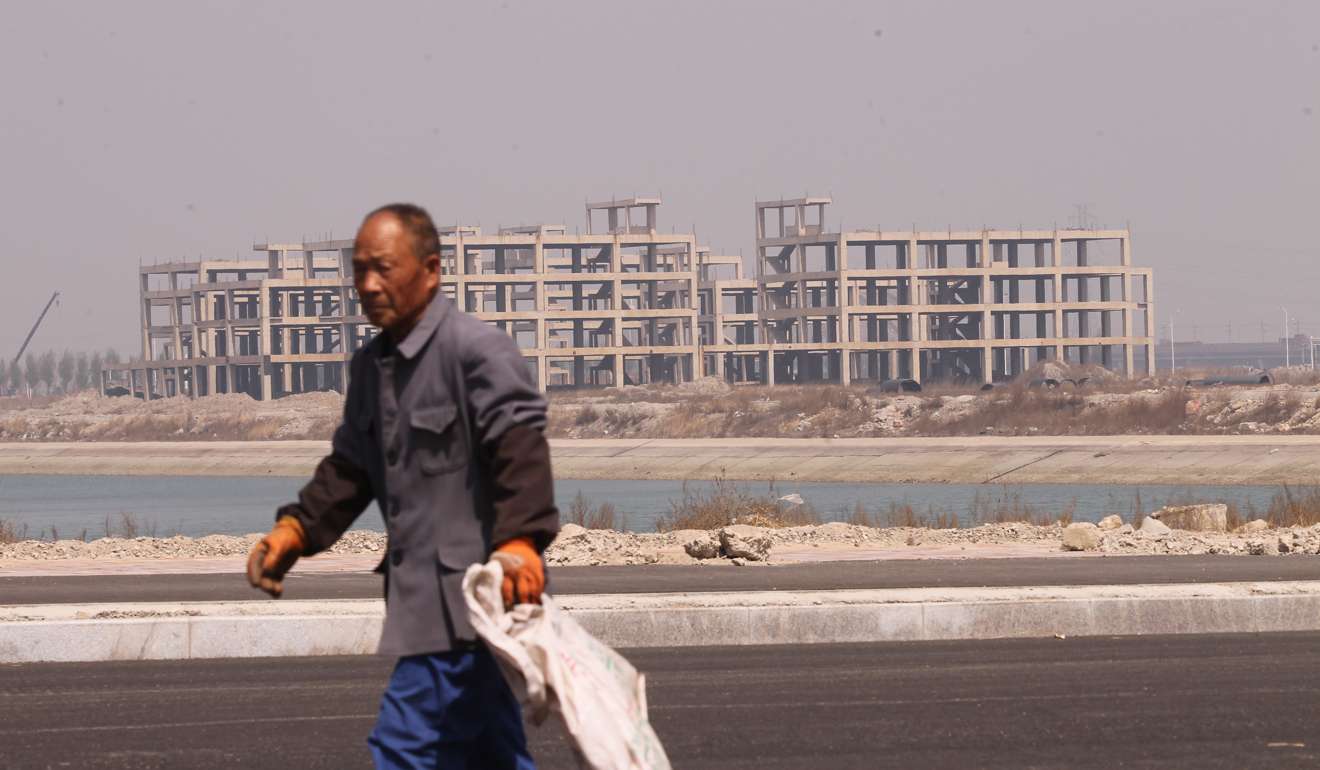
Creating new towns out of nothing through state-led urbanisation, flattening existing homes and forcing thousands, or even tens of thousands of people to move, has become the norm in China’s urban development.
China has 3,500 new districts or new towns on the drawing board or under construction. They will be able to accommodate 3.4 billion people even though the country’s population is expected to peak at 1.5 billion. In the extreme case of Datong, a coal mining town in the northern province of Shanxi, a former mayor gutted the city centre to build a fake ancient city.
A dream city always looks good from afar, but the road towards it often involves a lot sacrifices.
Liu Yongjiang, 75, makes a living rowing tourists around Anxin county’s Baiyang Lake. On a drizzly spring afternoon, Liu, wearing a black jacket stuffed with local duck feathers, was glad to retell stories about local guerillas who took shelter in the marshes when fighting Japanese invaders in the 1940s.
“The top leadership must like the revolutionary roots here. It should be good to develop the new area, but I’m afraid our village is likely to be demolished,” Liu said with a sigh.
His family has lived in the sleepy village of Yangdikou for seven generations, fishing and running a small hotel. “Now everything will change,” he said. “No one likes losing their home.”
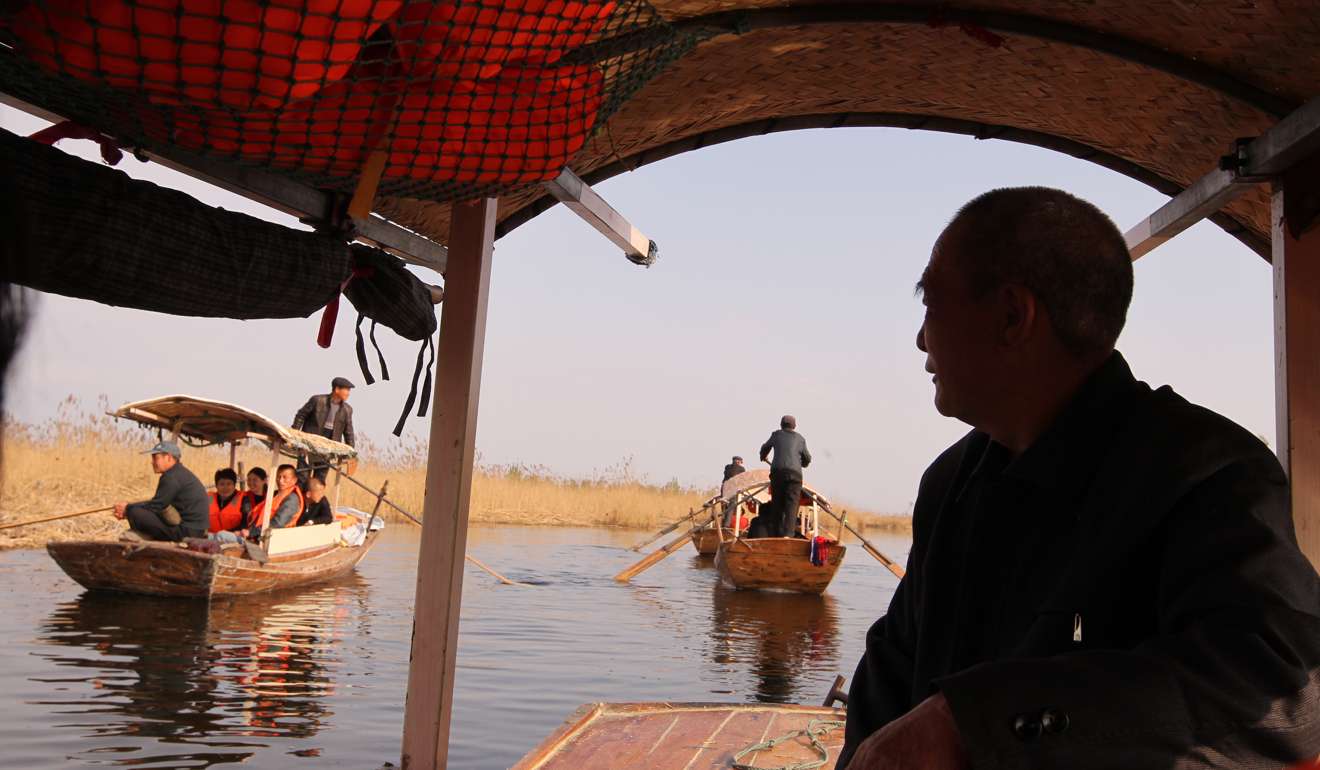
About 30 farmers took to the streets of Xiong county’s Hutai village on April 14 to protest against a local property developer. They said they had leased their land to the developer in 2012, but it had seized the land and denied their ownership after the plan for the new area was announced.
Jia Xiaoli, who owns a plastic bag workshop in nearby Yaguwan village, said he was worried about the fate of his small business, one of thousands of local family workshops engaged in “low-end manufacturing” not suited to Xi’s dream city.
A dozen workers, mostly relatives, toiled away dimly lit rooms, the smell of plastic bags filling the air. A room next door to the workshop doubled as Jia’s office and his family’s living room. Jia, 35, said his whole family relied on the workshop but he was sure they would lose it.
“It’s certain such small plants will not be needed by the new area. I only hope the government can give us enough compensation when shutting it down,” he said, staring at a wall full of school award certificates earned by his 12-year-old daughter.
Wang Fengge, the owner of Aihua Latex Products in Xiong county’s Dabu village, where balloon making is the main business, wept at the mention of the Xiongan New Area.
Production had been halted since the new zone was announced, on the orders of the local environment authorities.
“Sooner or later, our plant, which was set up by my father-in-law in the 1980s, will be asked to relocate,” she said, glancing towards a vacant workshop.
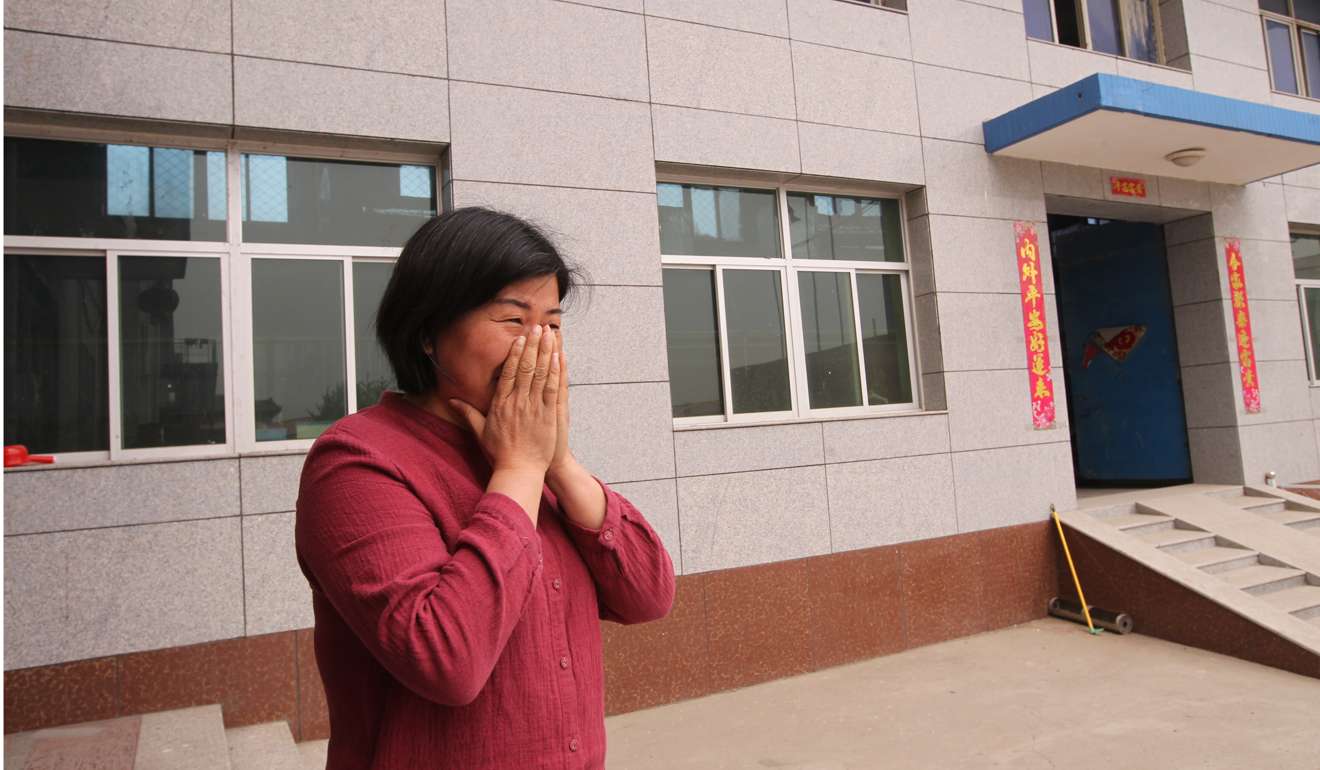
“Xiongan will favour hi-tech companies. Companies like ours will have no place here. I just can’t figure out where to go. Several officials from other places have approached us, inviting us to invest there.”
Human costs and the local community’s preferences are rarely given much weight by China’s urban planners. In Beijing, a massive campaign is shutting thousands of small street-side shops, restaurants and bars, some of which have existed for decades, in name of clearing up “illegal buildings” and beautification.
A number of experts have questioned the wisdom of evicting people from Beijing and pouring resources into barren land in pursuit of the perfect city.
Zhang Gengtian, a researcher with Urban China Initiative, a think tank founded by Mckinsey & Company and Tsinghua University, said relocation could be unnecessary because populous cities could break bottlenecks by resorting to innovation. Lu Dadao, an expert with the Chinese Academy of Sciences, said such planning should only be valid if it followed the wide solicitation of opinions and was passed by the National People’s Congress, the country’s top legislature.
Jiang Hong, a professor with Shanghai University of Finance and Economics and a Chinese People’s Political Consultative Conference delegate, said he had not heard a word about the Xiongan plan at the advisory body’s annual meeting in March.
“I don’t like this plan and I don’t think it will have a bright future,” Jiang said. “It’s totally a planned-economy thing and building a nationally important special economic zone completely from scratch will come at tremendous cost ... I object to this plan.”
Additional reporting by Frank Tang and Alice Yan

